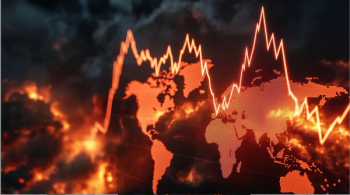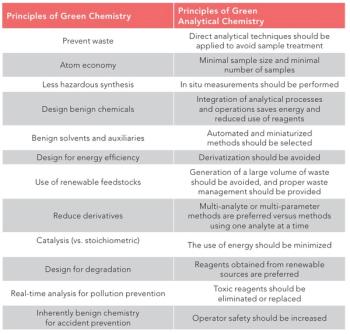Key Points
- Major vendors like Agilent and PerkinElmer returned to Pittcon, highlighting trends in automation, remote control, and green chemistry in GC instruments.
- Benchtop gas chromatographs now prioritize ease of use, compact size, and integrated diagnostics over raw performance differences.
- Attending conferences and engaging with professional groups remains vital for staying current and supporting the broader scientific community.
“GC Connections” presents our annual review of new developments in the field of gas chromatography introduced in 2024–2025.
I am pleased to present our annual review of products in gas chromatography (GC), with emphasis on bench top gas chromatographs, many of which were seen at Pittcon, which convened in breezy Boston, Massachusetts from March 1 to 5, 2025. The trend of trade shows becoming smaller over the past several years continues. Back in the heyday of chemistry trade shows looking more like a car show in the 1990s, Pittcon would have been too big for the venue in Boston; now the exposition did not fill one hall. The smaller show was intimate, and, as in recent years, I was able to easily converse with many colleagues and vendors who I see in-person once a year. The technical program was large and varied; while the exposition was the biggest event at the Pittcon of the past, in my opinion, it is now eclipsed by the technical program, short courses, and training opportunities.
The personal interactions, collaboration, and new ideas were more than worth the cost and effort of travel. While some of the major vendors were not present, Pittcon welcomed a return of Agilent Technologies and PerkinElmer to the exposition. I hope that the rest of the major vendors will re-consider attending and marketing at Pittcon and other conferences both as a means for “waving the flag” and for personal interaction and collaboration with colleagues and decision makers. The smaller conference opens up new venues and opportunities, with future meetings in San Antonio, Texas, San Diego, California, and a return to the conference's roots in Pittsburgh, Pennsylvania.
I repeat my challenge for everyone to start or resume attending professional conferences this year. Also consider participating in a local or regional chromatography discussion group or local section of the American Chemical Society meeting. For additional opportunities, the American Chemical Society meets in Washington, DC in August 2025 and in Atlanta, Georgia in March 2026, the Eastern Analytical Symposium in Princeton, New Jersey in November, 2025. For chromatographers with interest in mass spectrometry, the American Society of Mass Spectrometry (ASMS) just met, with the 2026 meeting in San Diego on June 1–4, 2026. For an additional broad-based conference, consider SciX, which meets October 5-10, 2025 in Covington, Kentucky. Current global economic conditions are extremely difficult for conference organizers and for the many vendors, contractors, and economies that conferences support. They still need your help, even more than last year. Conference and meeting attendance is still the best way to improve skills, learn about new techniques, train, and educate yourself.
For a no-cost virtual experience, look out for the recording of the 2025 ChromTalks, just held in May, sponsored by LCGC International and ChromAcademy, its online training platform. This year, ChromTalks focused on troubleshooting both GC and high performance liquid chromatography (HPLC), with a host of expert academic and industrial speakers in a full two-day symposium. Previous years’ sessions are available for streaming on LCGC International’s website, chromatographyonline.com.
GC continues to have a strong presence on the conference circuit and in the literature. Topics such as cannabis analysis, biofuels, food and beverages, forensics, pharmaceuticals, and general applications of both GC and comprehensive two-dimensional gas chromatography (GCxGC) are seen in a robust publication space. GC itself is trending toward being less the driver of research than its application to scientific problems. The most effective online search for GC today probably begins with phrases such as “GC of ____” with your analyte or sample of interest filling in the blank.
The information about benchtop gas chromatographs presented in this article is based on vendors’ responses to questionnaires and additional information from press releases, websites, and product literature, not on actual use or experience of the author. Every effort has been made to collect accurate information but because of the preliminary nature of some of the material, LCGC International cannot be responsible for errors or omissions. This column cannot be considered a complete record of all new GC products introduced in the past year because not all vendors responded to the questionnaire, nor is all the submitted information necessarily included here, because of the limited available space and the editors' judgment as to its suitability.
Although exposition booths have gotten smaller over the years and fewer instruments are on display at conferences, there are several trends in major instrumentation that are continuing in 2025. Among these are increasing capability, versatility, and ease of use in the mainline benchtop instruments, increasing product lines and availability of smaller footprint instruments that have most of the capabilities of mainline systems, except in smaller packages, more automation options (very few users of gas chromatography inject samples manually) and the introduction of the principles of green chemistry to analytical methods. For additional details and more recent product additions in gas chromatography, please see the previous editions of this review (1–3).
Mainline Benchtop Gas Chromatographs
Today’s mainline instruments from the major vendors oƒ er the greatest performance, versatility, capability for multiple inlets, columns and detectors and ready interfacing to online sample preparation techniques. The vendors’ website descriptions are shown side by side below; we see that all of them focus on simplified workflows and ease of use as the main selling points. While this is not a comprehensive listing of all the mainline gas chromatographs available, it provides a useful insight into the vendors’ thinking. Choosing a gas chromatograph seems a lot like buying a car. Pretty much all the reputable cars on the market can get a person from place to place, as all the gas chromatographs will effectively run nearly all GC-appropriate samples. Purchasing decisions are therefore often driven by management considerations, seen even in these brief descriptions from the vendors.
Agilent Technologies offers its latest generation 8890 gas chromatograph. “The 8890 Gas Chromatograph (GC) System delivers fast and accurate results with flexible configuration capabilities to address specific analysis demands. When accurate results are critical and instrument uptime is a must, this intelligent, high-performance GC consistently exceeds expectations. Built-in intelligence and sixth-generation EPC enable autonomous diagnostics that check GC system health and alert you to potential issues and how to solve them. Step-by-step instructions for common gas chromatograph maintenance procedures are presented on the touch screen or remotely through the GC browser interface.”
PerkinElmer's GC 2400 platform offers a detachable touchscreen allowing remote instrument control and analysis. “Discover the GC 2400 Platform, offering innovative technology that enables access to real-time information on the go. Efficiently monitor the status of your sample runs with a detachable, intuitively designed touchscreen, helping you make faster decisions from anywhere–in or out of the lab. Maximize GC productivity and increase automation of lab operations with easy-to-use SimplicityChrom Chromatography Data System (CDS) Software. It enables the integration of every step in the GC workflow, from instrument control to data processing.”
Thermo Fisher Scientific offers the Trace 1600 Series, which they describe as “designed to enhance the workflow experience for both new and expert users through its advanced multi-functional touch screen with instrument health monitoring and how-to videos. The Trace 1600 GC is designed for minimum interaction with the instrument, limiting the local operations to the essentials and enabling full instrument control through the chromatography data system.”
Shimadzu Scientific Instruments' premier instrument, the Nexis GC-2030 “is a cutting-edge gas chromatograph designed for precision, flexibility, and efficiency across diverse analytical applications including petrochemical, pharmaceutical, environmental, food and forensics. The GC-2030 also features Analytical Intelligence for fast, accurate analysis. Its automated workflows enable users to operate the system remotely, saving time and eƒ ort. The system can also diagnose itself, simplifying the maintenance process. With these intuitive features, users can easily operate the system and collect accurate data, regardless of their skill level.”
Smaller Footprint Benchtop Gas Chromatographs
Driven by customers’ needs for efficiency, ease of use, smaller laboratory footprints and more recently, interest in greener chemical analysis, the major vendors oƒ er smaller footprint systems. These instruments generally oƒ er all the capabilities of the mainline instruments, with the smaller footprint limiting some features such as the number of inlets, columns and detectors that can be installed on a single system. These instruments are usually directed to routine analysis applications. Again, the vendors’ own website statements and descriptions, seen side by side, provide insight into thinking about the utility of these relatively new systems. Several smaller footprint gas chromatographs from smaller vendors were surveyed in a previous installment of “GC Connections” (4).
Agilent Technologies offers several smaller footprint systems. “The intelligent, single-channel 8850 Gas Chromatograph (GC) System is the smallest high-performance benchtop GC on the market. With a footprint about half that of traditional instruments, you can have two 8850 GCs running simultaneously without sacrificing valuable bench space. Based on 6850 and 8890 GC technology, it uses the same inlets, detectors, and EPC as the 8890 to deliver equivalent analytical results. The Intuvo 9000 Gas Chromatography (GC) System is designed for fast gas chromatography and high throughput while simplifying your laboratory workflow. Eliminate column maintenance and change columns in less than a minute with Intuvo’s click-and-run connections. Ballistic direct column heating oƒ ers faster GC cycle times and improves reproducibility. Agilent 990 Micro GC systems provide the answers you need in the compact footprint you want. They combine innovative features with quality and speed that are critical to your gas analysis. Quick, easy startup means you get results in minutes, even if you change measurement locations frequently.”
Shimadzu Scientific Instruments offers “the new and improved Brevis GC-2050 comes fully updated to include additional models of inlets, detectors, and pre-treatment devices. Highlighting the new additions, the redesigned TCD exclusive to the Brevis GC-2050, surpasses current performance and stability of existing TCD detectors on the market. Only 350 mm (13.78”) wide with AOC-30i autosampler, it is a perfect fit for a variety of labs. Although compact, the oven can accommodate two 100-meter industry standard columns for dual line analysis. With ease of use in mind, the GC-2050 was designed without a touch screen display and only three physical buttons: start, stop, and maintenance.”
Lucidity Systems, formerly part of CEM, a relative newcomer has oƒ ered the Mini-GC for several years. “The Lucidity GC-FID is the smallest, most aƒ ordable, most robust, easiest to use fully functional Gas Chromatograph on the market, with the lowest cost of ownership. The software and hardware have been designed from the ground up to make the Lucidity GC-FID extremely intuitive to use so that even a novice can have success with gas chromatography and even an expert can get the performance and flexibility they are used to. We want to make it simple. You get everything you need to perform GC analysis when you purchase a Lucidity GC-FID, including a laptop, software, a column, and all the accessories you need.” Lucidity also offers a compact gas generator that can provide both carrier and detector gases and is stackable with the instrument, making the full system small footprint and portable.
This review has highlighted major benchtop gas chromatographs available in 2025. Using the vendors’ own instrument descriptions, we see that the market is emphasizing efficiency, ease-of-use, simplified troubleshooting, remote control and analysis capability and sustainability. This represents a shift that has been occurring over the course of decades. When I started in gas chromatography about 35 years ago, the emphasis was on performance and there was a wide range of performance capabilities available, with comparatively rudimentary management and little attention to ease of use. Today’s instruments generally have similar performance, with a wide range of management and analysis options and a focus on ease of use. I challenge and encourage everyone to get out to a conference, where you can see and compare these instruments, and their vendors side by side.
References
(1) Snow, N. H. From Pittcon 2024 and Beyond: New Gas Chromatography Products to Watch This Year. LCGC International 2024, 1 (4), 12–15. DOI: 10.56530/lcgc.int.vi7179j3
(2) Snow, N. H. From Pittcon 2023 and Beyond: The Gas Chromatography Products to Watch This Year. LCGC N. Am. 2023, 41 (4), 129–131. DOI: 10.56530/lcgc.na.kr7285g3
(3) Snow, N. H. New Gas Chromatography Products for 2021–2022. LCGC N. Am. 2022, 40 (4), 158-164. DOI: 10.56530/lcgc.na.la4187p6
(4) Snow, N. H. Let’s Get Small: Powerful Gas Chromatography in Small Packages. LCGC N. Am. 2021, 39 (3), 128–131.
About the Author





